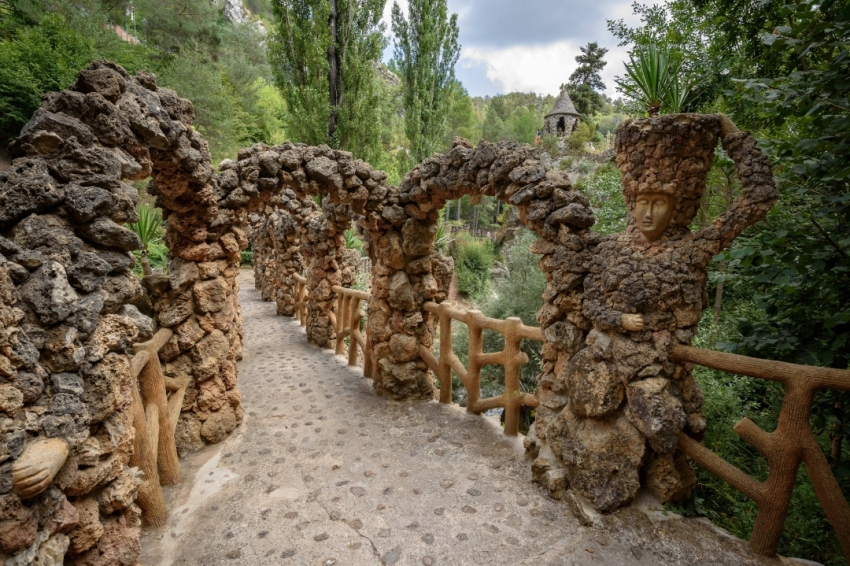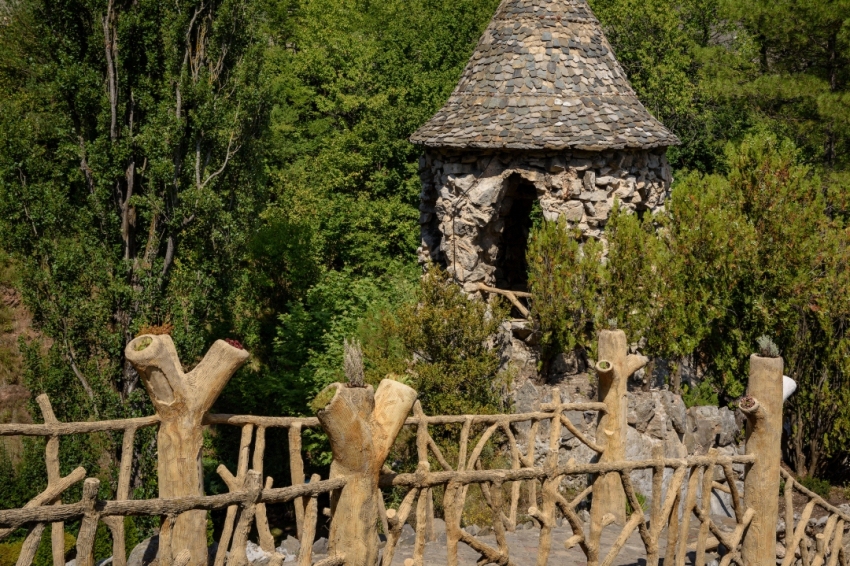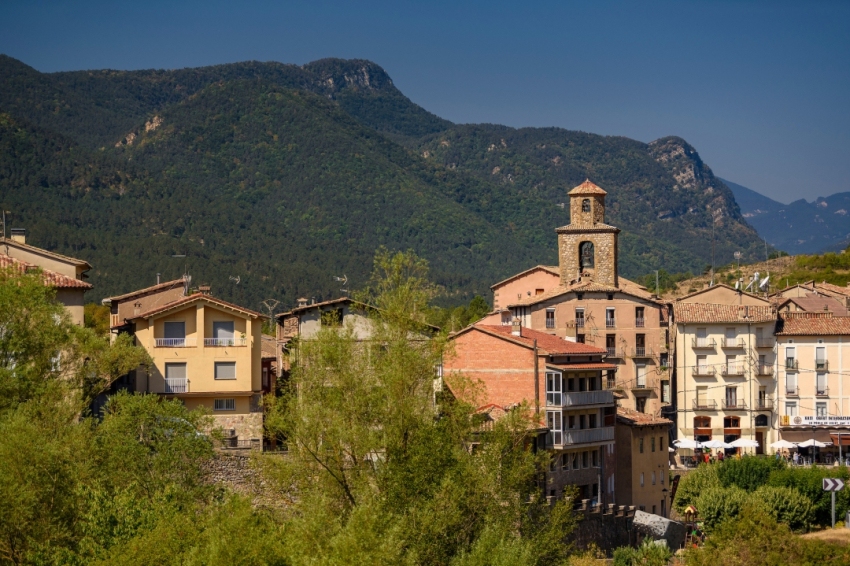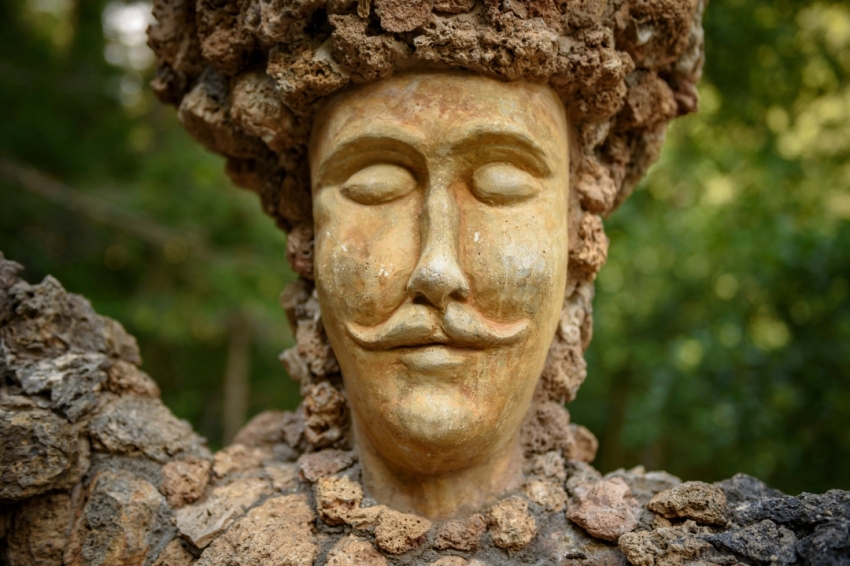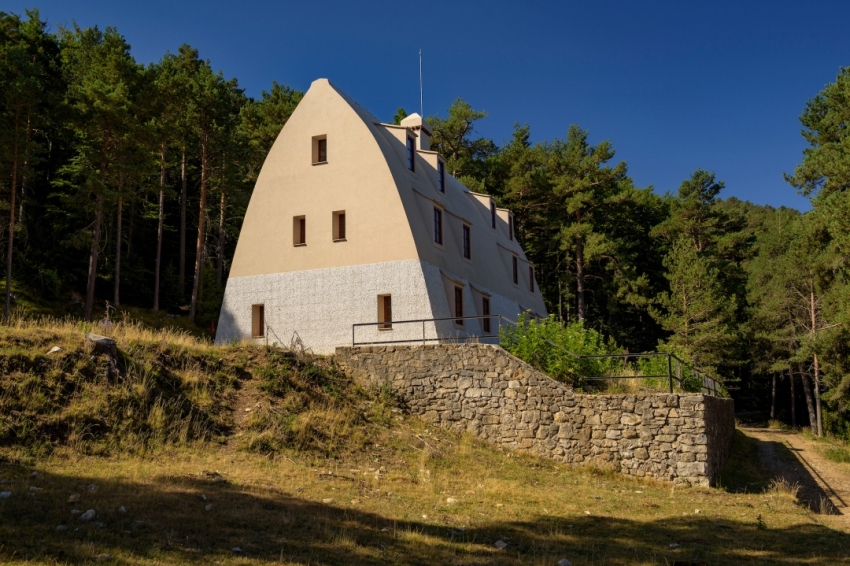Gaudí and the Berguedà
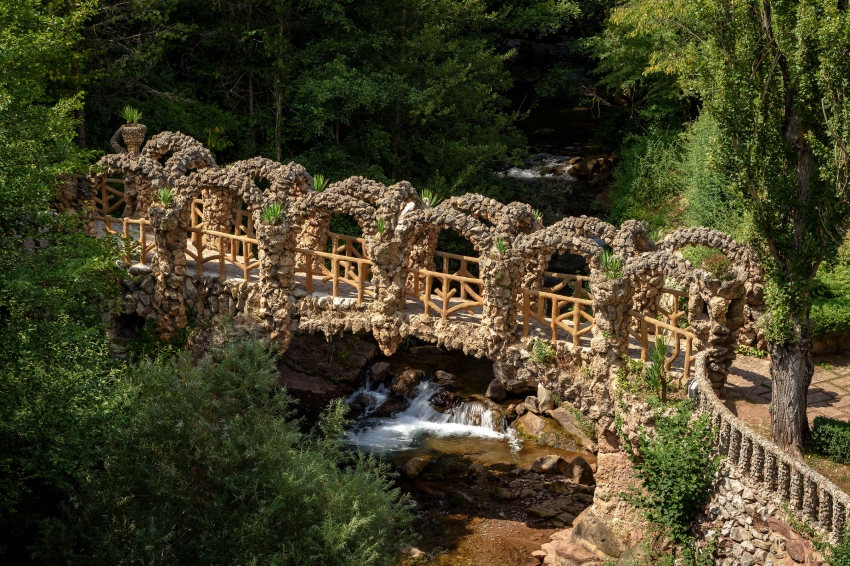
La Pobla de Lillet, in the interior of Catalonia, is the second municipality with the most works by Gaudí, only surpassed by the city of Barcelona. There we find the Artigas Gardens (also known as the Magnèsia Fountain Garden ) and the Chalet de Catllaràs, built at the beginning of the 20th century.
Curiously, it is one of the most unknown works of genius and the only one where the true protagonist is water. For this reason, we encourage you to visit them.
History
The existence of Gaudí's work in places as inhospitable as the pre-Pyrenees cannot be understood without establishing a relationship with industrial development in the area.
At the beginning of the 20th century, the first portland cement company in the country was created in Castellar de n'Hug. Its promoter, Eusebi Güell, commissioned Antoni Gaudí to design a chalet to house the engineers who would work in the company. The famous architect was staying with the Artigas family, working on the design of the house, when they asked him to build a garden behind the factory for the exclusive use of the family. As a sign of gratitude for their hospitality, in 1904 Gaudí designed the gardens, although he did not personally direct the works, since Park Güell took up all his time at that time.
The authorship controversy
The Artigas Gardens were abandoned at the start of the Spanish Civil War. Because the place where they are located is difficult to access, they were not discovered until 1971, when a journalist from the newspaper " El correo catalán " published an article about them pointing to Gaudí as the father of the work.
Despite this, the lack of further documentation on the authorship of the gardens meant that they, as well as the Chalet de Catllaràs, were not included in Gaudí's work until, two decades later, the Real Cátedra Gaudí (Polytechnic University of Catalonia) carried out an investigation on these constructions, confirming that they were the fruit of the Catalan genius.
Visit to the Artigas Gardens
It cannot be denied that Gaudí was inspired by Park Güell to build these gardens. In fact, many of the plants that adorn this space came from Park Güell by express order of the author. However, there are notable differences between the two works.
Unlike the park of the city of Barcelona, which is dry in nature, the Artigas Gardens embrace the Llobregat River, extending along its two banks, which gives them a humid character. Its design is oriented to the enjoyment of the waters of the channel, making it the true protagonist of the work. In addition, while Park Güell is known for its varied colours, the color of the stone predominates in the gardens, only interrupted by the green brushstrokes of the plants.
The first thing we find is the Magnesia Fountain, an artificial cave with two holes made in the rock that function as windows; under which there are some benches where you can sit down to enjoy the sound of the waters of the river that flood this hole in nature.
Following the steps located above the grotto, you access the Pergola del León, so called because the Lion Fountain rests inside it, a statue made by Ramon Millet i Domènech, who was in charge of restoring the sculptures in the garden under the supervision of the Real Cátedra Gaudí.
After passing under the old railway track that linked the towns of Guardiola de Berguedà and Clot del Moro, there is a pine forest where, in the background, we can see the Fuente del Buey.
Because the gardens were designed following the course of the river, Gaudí built two bridges that allowed crossing from one bank to the other.
The Arco Quebrado Bridge (also called Magnèsia Bridge) leads to an enormous cedar tree that guards the eagle sculpture, made up of small stones that show this bird with its wings outstretched, about to take flight. To the right, we find the Glorieta, a surprising stone pavilion that offers a panoramic view of the Llobregat River and the gardens.
A set of stone planters, with sinuous shapes, leads us to a tortuous path parallel to the riverbed, in which an artificial waterfall made of stone, covered with moss, with numerous holes through which the water runs unstoppable, stands out. The path descends until it reaches a viewpoint where you can take a short break to observe the Puente de los Arcos. This bridge is one of the most striking architectural elements of the gardens. Two human figures, representing a man and a woman, guard the five stone arches, joined by wooden railings that add color to the whole.
And as in all Gaudí works, references to Christianity cannot be missing, the Artigas Gardens are no exception. In them we find the four evangelists represented under the figures of the eagle, the bull, the lion and, finally, an angel that is not currently restored. All images are positioned to form a cross.
The guided tour of the gardens lasts one hour. Before leaving, it is advisable to check the schedules.
Pobla de Lillet
Since we are here, we cannot stop walking through this old town that owes its creation to the nobleman Ramón II de Urtx, who decided, in the 12th century, to establish his castle in this valley protected by three rivers: the Llobregat, Aritja and Regatell. Not content with this, he also built a fortress that would allow him to defend himself in case of attack.
In the old town we find the parish church, where the Christ in Majesty is located, a huge polychrome wood carving dating from the same period as the castle.
However, La Pobla de Lillet stands out for the landscapes that surround it, with impressive viewpoints that offer a unique spectacle, such as the Mirador Joan Casanova. Leaving the town, to the right of the train station there is a path that leads to the Sanctuary of Falgàs, where the Mother of God of Falgàs is located, an image sculpted in alabaster whose origin dates from the 15th century.
Two kilometers away stands the Monastery of Santa María de Lillet. Located in a privileged place, at the foot of the mountain, it enjoys great importance in the Alto Berguedà region. Its Romanesque-style church has a Latin cross floor plan that has undergone numerous reforms, the largest being made in the 18th century, and an impressive rustic cloister.
The Chalet of Catllaràs
There are two paths that lead to Chalet de Catllaràs. The first is before reaching La Pobla de Lillet, the detour located in front of the train station (Ca la Xesca), which leads to the Sanctuary of Falgars, mentioned above, leads us to the house in the Sierra de Catllaràs. If we are inside La Pobla de Lillet, in the Les Colomines neighborhood there is a marked trail that indicates the route, which lasts an hour and a half.
Designed in the shape of a briefcase, the chalet fared worse than the gardens and lost most of its decorations in the remodeling carried out in the 1980s. Currently, it is a shelter.
El Clot del Moro, the last modernist stop in Berguedá
Before reaching Castellar de n'Hug, taking the BV-4031 road, is the Clot del Moro, where we can see the old Asland cement factory, a modernist building designed by Rafael Guastavino commissioned by Eusebi Güell. Although its productive activity ended in the 1970s, this architectural jewel is currently part of the Museu de la Ciència i de la Tècnica de Catalunya (mNACTEC).
It is worth observing this wonder of a building guarded by imposing mountains.
You may also be interested in: Rediscover Gaudí's architecture | A walk through Catalan modernism | Get to know the flora of Catalonia
What to do
Tren del Ciment
La Pobla de Lillet (a 1.2 Km)Travel with the Tren del Ciment in a unique place where you…
Museu de les Mines de Cercs
Cercs (a 6 Km)Dedicated monographically to coal, it is a museum of technique and history…
Centre d'interpretació Dinosaures Fumanya
Cercs (a 9.4 Km)Discover the Fumanya Dinosaurs Interpretation Center and travel to the past in…
Where to eat
La Santa Restaurant
Ribes de Freser (a 11.4 Km)Our fires cook KM0 food obtained from the earth using traditional methods.…
Restaurant Gust Picant
Berga (a 14.6 Km)At Gust Picant, you can enjoy affordable menus with a wide variety…
Restaurant Apartaments Els Roures
Castellar del Riu (a 14.8 Km)Rest, charm and good cuisine, a unique space located in Berguedà, at…
Hostal la Muntanya
Castellar de n'HugFamily hostel located in Castellar de n'Hug. It offers various accommodation options,…
Where to sleep
Hostal la Muntanya
Castellar de n'HugFamily hostel located in Castellar de n'Hug. It offers various accommodation options,…
Berga Resort
Berga (a 15.5 Km)Tourist and sports center located in the Catalan Pre-Pyrenees (700 m high)…
Angelats Hotel
Ribes de Freser (a 11.4 Km)Surrounded by a thousand-year-old forest, with wide trails to walk, the 20…

